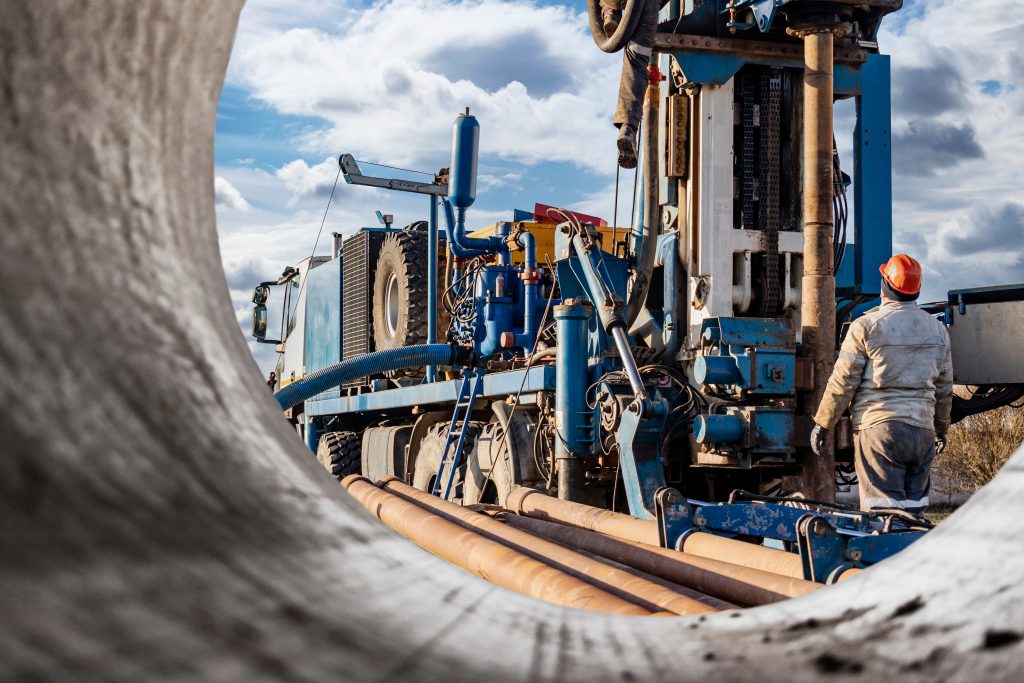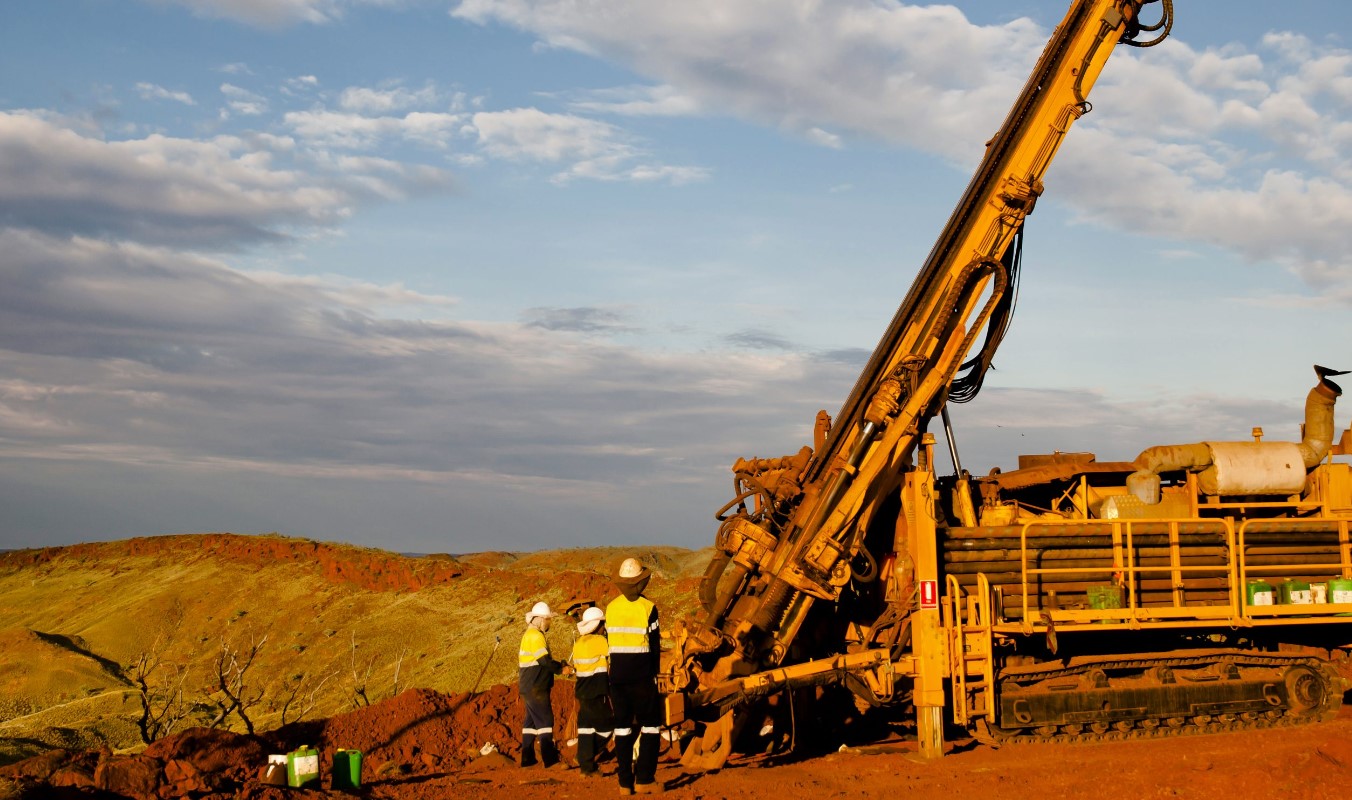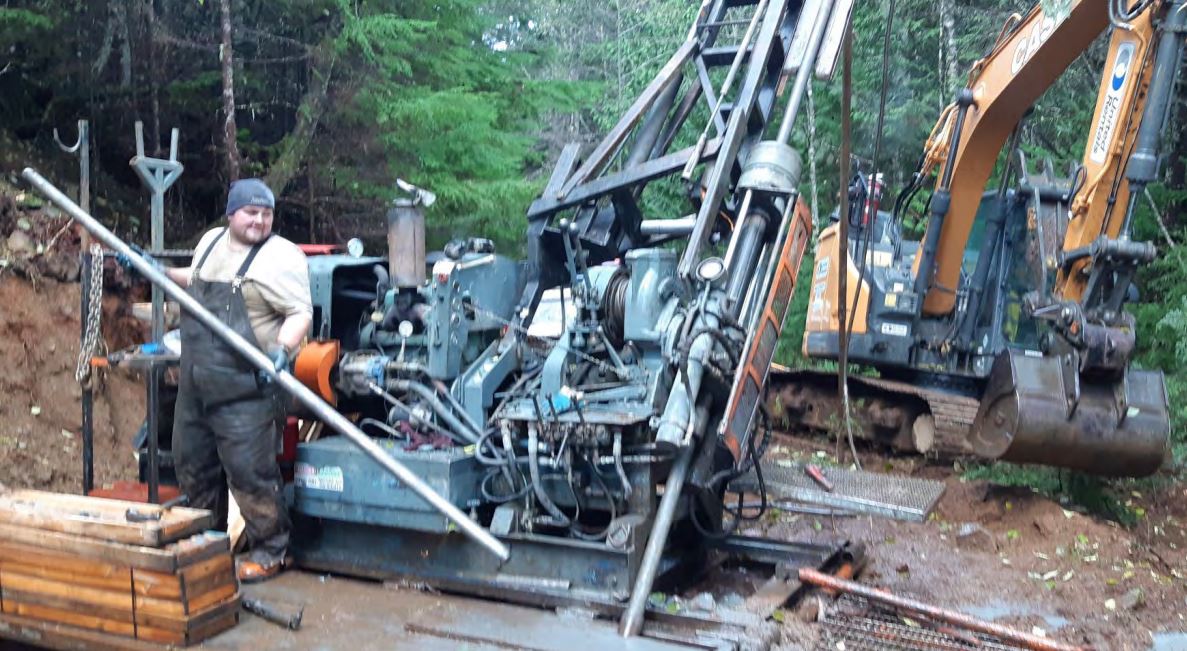Stamper taps into significant copper, molybdenum and rhenium mineralization at Redonda

By Ian Foreman
The management of Stamper Oil and Gas Corp. [TSX.V: STMP, FSE: TMP2, OTC: STMGF] believe that they have made an important discovery at their Redonda property. Recent drill holes have tapped into significant copper, molybdenum and rhenium mineralization within previously unrecognized breccia bodies.
Stamper is an energy-commodity-focused resource company seeking to acquire interests in mineral and/or oil and gas resource properties focused on energy creation, storage or delivery. Acquiring the Redonda property was a logical step in the company’s diversification from a pure oil and gas play.
 “In a testament to our commitment to thorough research and strategic decision-making, our recent venture into copper has proven to be impeccably timed”, stated Bryson Goodwin, president and CEO of Stamper. “In my opinion, the past year has been nothing short of a resounding success.”
“In a testament to our commitment to thorough research and strategic decision-making, our recent venture into copper has proven to be impeccably timed”, stated Bryson Goodwin, president and CEO of Stamper. “In my opinion, the past year has been nothing short of a resounding success.”
The Redonda property covers 2,746.46 hectares (or 27.46 square kilometres) and is located on Redonda Island, British Columbia. The property has easy year-round access from Campbell River, which is 40 kilometres to the southwest. The property is crisscrossed by logging roads, which facilitates lower exploration costs.
The recent exploration program was completed under a letter of support from the Klahoose First Nation as the property lies within their traditional territory.
Previous exploration on the property had been sporadic with documented fieldwork and trenching dating back to the 1960’s. The most significant program was in 1979 when Teck Resources Ltd. [TSX: TECK.A] completed nine widely spaced drill holes. Collectively, the historic work had defined a large area of widespread copper and molybdenum mineralization.
In the claims area, Early Cretaceous aged diorites of the Coast Plutonic Complex have been intruded by at least three later intrusive units. A key feature to the property is a sixty to ninety metre wide hornblende dike that has been traced on surface for 650 metres. Historically, the higher concentrations of copper-molybdenum mineralization were understood to be closely associated with the hornblende dike, particularly in areas where it has been brecciated. The main metallic mineralization observed on the property is pyrite, chalcopyrite, bornite and molybdenite.
 The recent identification of rhenium adds to the potential for the project. Rhenium, one of the rarest elements, is a transition metal that boasts the third highest boiling point of any element. It is also dense and resistant to corrosion. These unique characteristics make it valuable in aerospace alloys, electronic components and catalysts.
The recent identification of rhenium adds to the potential for the project. Rhenium, one of the rarest elements, is a transition metal that boasts the third highest boiling point of any element. It is also dense and resistant to corrosion. These unique characteristics make it valuable in aerospace alloys, electronic components and catalysts.
Stamper recently released the results from their inaugural drill program. The company completed five diamond drill holes within the area previously defined by Teck’s drilling. Four of the holes returned multiple intersections of copper, molybdenum and rhenium mineralization.
Significantly, each of those holes intersected mineralization from surface and each hole bottomed in mineralization.
Hole 2 intersected 108 metres grading 0.412 percent copper equivalent (composed of 0.251 percent copper (Cu), 0.025 percent molybdenum disulphide (MoS2), and 0.1025 percent rhenium (Re)) from surface.
Hole 3 intersected 45 metres grading 0.529 percent copper equivalent (composed of 0.329 percent Cu, 0.0265 percent MoS2, and 0.1111 percent Re) from surface as well as 77.3 metres averaging 0.477 percent copper equivalent (composed of 0.323 percent Cu, 0.0197 percent MoS2, and 0.0791 percent Re).
Hole 4 intersected 15.2 metres grading 0.632 percent copper equivalent (composed of 0.452 percent Cu, 0.0265 percent MoS2, and 0.1053 percent Re) from surface as well as 72 metres averaging 0.422 percent copper equivalent (composed of 0.235 percent Cu, 0.0228 percent MoS2, and 0.1106 percent Re).
Hole 5 intersected 30.3 metres averaging 0.362% copper equivalent (0.32 percent Cu, 0.0192 percent MoS2, and 0.0749 percent Re) over followed by 142.6 metres grading 0.49 percent copper equivalent (0.279 percent Cu, 0.0281 percent MoS2, and 0.0927 percent Re). In addition, the hole ended in mineralization.
 The current extent of the copper-molybdenum-rhenium zone at the Redonda property has been defined over and area that stretches 600 metres by at least 500 metres.
The current extent of the copper-molybdenum-rhenium zone at the Redonda property has been defined over and area that stretches 600 metres by at least 500 metres.
The potassic-altered core of the mineralizing system is composed of a variable density of dark mafic-rich fragments that are related to the abundance of hornblende in vugs and intense chalcopyrite, molybdenite and pyrrhotite replacement. However, some higher-grade mineralization is also associated with an increased density of quartz stockworks and fracture filling.
An example of this higher-grade mineralization is a 10.7 metre interval of 1.468 percent copper equivalent (0.375 percent Cu, 0.1377 percent MoS2, and 0.5871 percent Re) in drill hole 2 at a depth of 158.5 metres down hole. This significant intersection shows the potential for additional high-grade sections, or ‘sweeteners’, to occur throughout the target area.
The company believes that mineralization encountered to date represents the upper portion of a magma cupola or carapace. This interpretation, combined with a recent compilation of structural and geochemical data, suggests that longer holes would be required to test an area immediately south and down-plunge of the known mineralization.
The company is already planning for the next phase of exploration at Redonda. Initial plans for this next program, which is already permitted, include geophysics and deeper drilling.
The mineralized breccias were not recognized by previous companies. The recent drilling my Stamper not only showed the significance of this newly discovered style of mineralization but that the concentration of more hornblende-rich fragments coincided with higher grades.
“Breccias with mineralized fragments are intriguing, especially when the fragments are as well mineralized as they are here at Redonda”, stated Jo Shearer, Stamper’s Qualified Person. “The question at hand is, can we find the source of those strongly mineralized fragments?”.
Volumetrically, the breccia bodies are very significant to the potential of the project and the next drill program will help further define their extent. And, with luck, maybe Stamper will discover the source of those mineralized fragments.
